“An unprecedented number” of interconnection requests last year from utility-scale renewables and storage projects “continue to prolong interconnection queue backlogs,” said a Federal Energy Regulatory Commission (FERC) staff report.
Drawing on preliminary data compiled by Lawrence Berkeley National Laboratory, the report says about 1730 GW of utility-scale solar, wind and storage projects are now active in the interconnection queues of transmission system operators. That’s almost 400 GW more than the approximately 1350 GW reported by Berkeley Lab at year-end 2021.
Solar, wind and storage projects in the interconnection queues make up nearly 94% of the total capacity in the queues, with solar constituting over half of that amount, the report said.
Total capacity in the queues exceeds 1,366 GW of generation, 325 GW of standalone storage, and 159 GW of hybrid storage and generation capacity. Those values including 84 GW of natural gas and 2 GW of coal capacity.
Berkeley Lab has estimated that 24% of the projects seeking interconnection from 2000 to 2020 have subsequently been built, the report said. The PJM grid operator, which serves a larger population than any other grid operator, has projected that 5% of the projects now in its interconnection queue will be built.
The FERC staff report said the costs to interconnect “have grown substantially over time with the cost of broader network upgrades driving nearly all this growth,” and provided the nearby graph from Berkeley Lab. Interconnection costs for solar, wind and storage are higher than for natural gas, the report added.
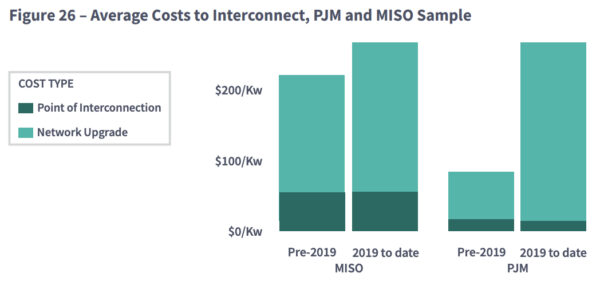
Interconnection queues are maintained by transmission system operators. In much of the U.S. the transmission operators are known as RTOs or ISOs, as shown on the nearby map from Sustainable FERC Project. In much of the West and the Southeastern U.S., the transmission operators are electric utilities.
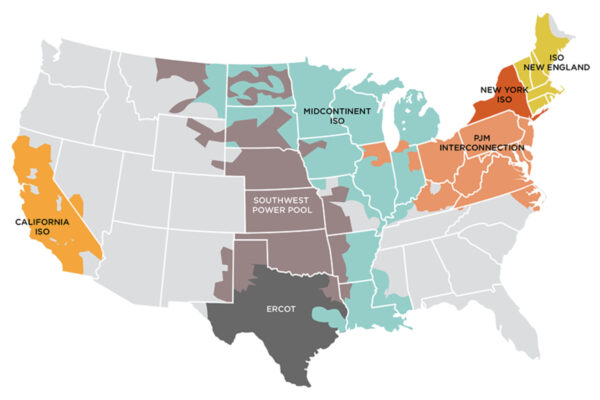
To be interconnected to the transmission grid, a project entering an interconnection queue must wait for the transmission provider to complete a series of interconnection studies, as shown in the nearby image from Berkeley Lab, and then pay the interconnection cost as determined by the final study. The transmission operator then builds the interconnection infrastructure.
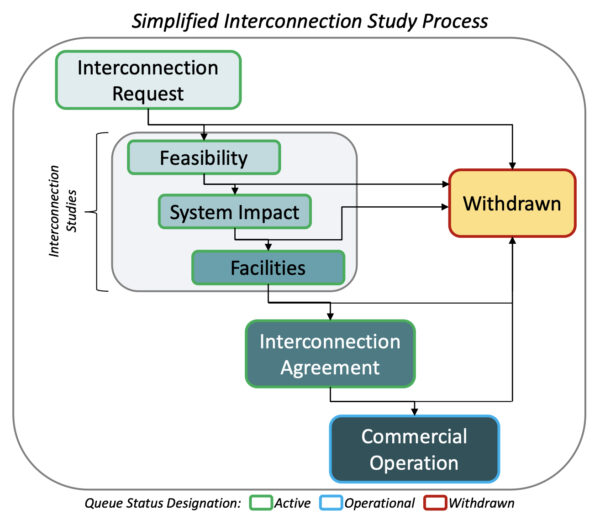
The FERC staff report credits transmission system operators as they “continue to look to possible solutions to address generator interconnection queue backlogs,” noting that several transmission operators have moved toward cluster studies that allow multiple projects to be studied simultaneously.
Summarizing FERC’s work on this issue, the staff report states that last June FERC proposed several reforms to the generator interconnection process to implement a first-ready, first-served cluster study process, increase the speed of interconnection queue processing, and incorporate technological advances into the interconnections process.
The FERC staff report is titled “2022 State of the Markets.”
This content is protected by copyright and may not be reused. If you want to cooperate with us and would like to reuse some of our content, please contact: editors@pv-magazine.com.
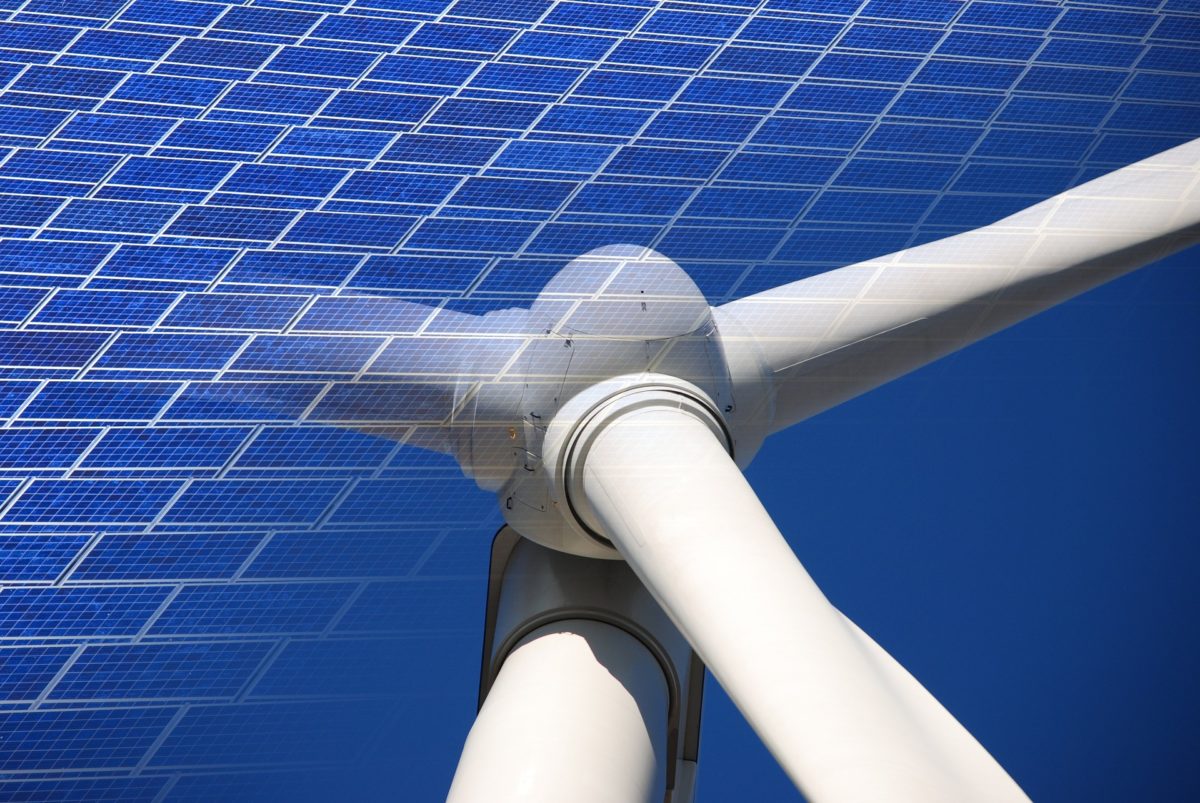





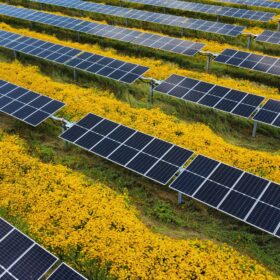

By submitting this form you agree to pv magazine using your data for the purposes of publishing your comment.
Your personal data will only be disclosed or otherwise transmitted to third parties for the purposes of spam filtering or if this is necessary for technical maintenance of the website. Any other transfer to third parties will not take place unless this is justified on the basis of applicable data protection regulations or if pv magazine is legally obliged to do so.
You may revoke this consent at any time with effect for the future, in which case your personal data will be deleted immediately. Otherwise, your data will be deleted if pv magazine has processed your request or the purpose of data storage is fulfilled.
Further information on data privacy can be found in our Data Protection Policy.